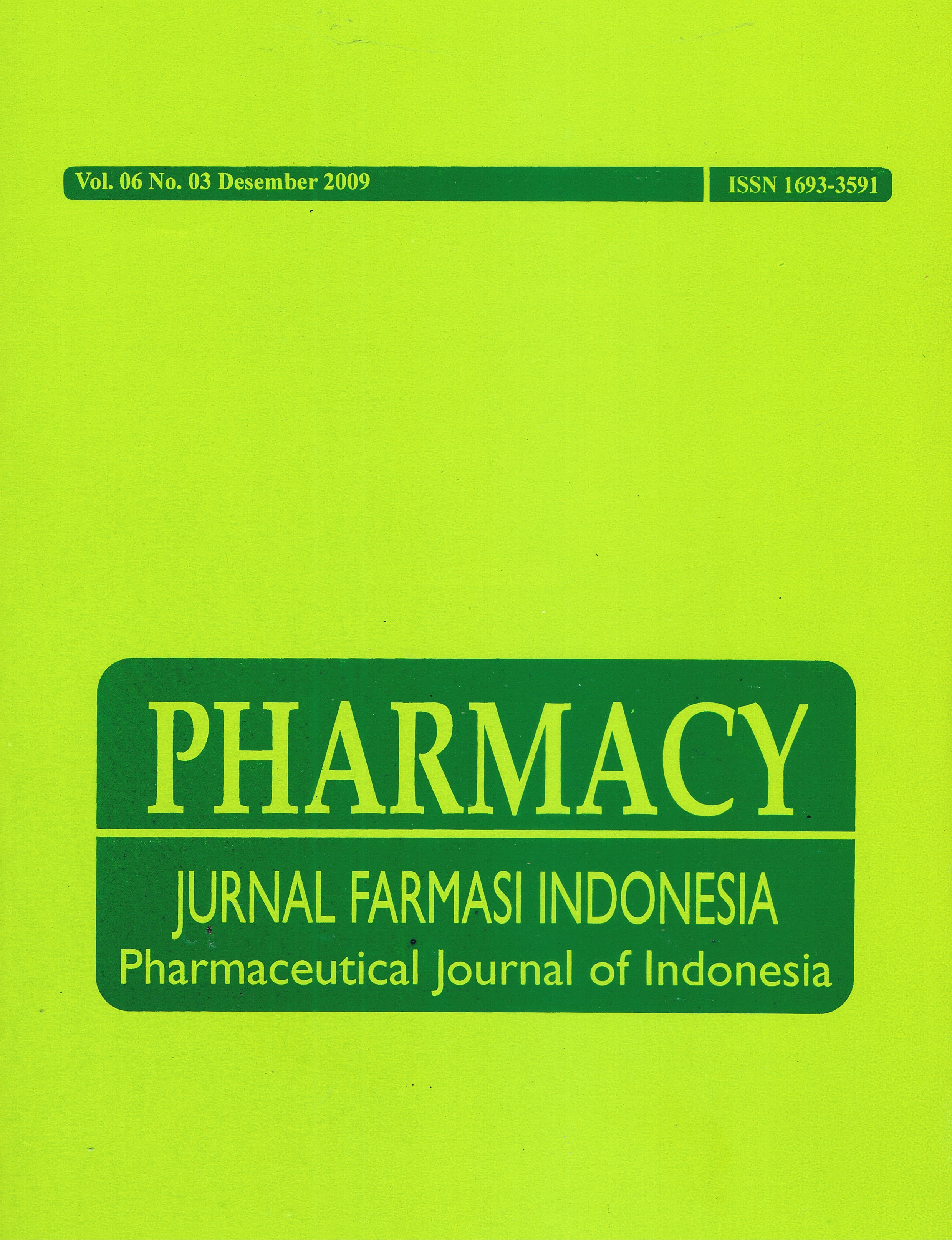OPTIMASI METODE PENETAPAN RANITIDIN DALAM PLASMA MANUSIA SECARA IN VITRO DENGAN METODE SPEKTROFOTOMETRI ULTRAVIOLET-VISIBEL
DOI:
https://doi.org/10.30595/pji.v6i3.880Abstract
ABSTRAK Telah dilakukan penelitian Optimasi Penetapan Ranitidin dalam Plasma Manusia secara in vitro dengan metode spektrofotometri Ultraviolet-Visibel. Penelitian ini bertujuan untuk menganalisis ranitidin dalam plasma manusia secara in vitro dengan metode spektrofotometri Ultraviolet-Visibeldan untuk memperoleh hasil metode analisis ranitidin dalam plasma manusia secara in vitro dengan metode spektrofotometri yang optimal. Metode untuk Optimasi Penetapan Ranitidin dalam Plasma Manusia secara in vitro dilakukan dengan metode spektrofotometri UV-VIS menggunakan pelarut HCl 0,1 N. Pada penelitian ini digunakan dua metode. Metode pertama larutan baku ranitidin ditambahkan di awal, sedangkan pada metode dua larutan baku ranitidin ditambahkan di akhir yaitu setelah TCA dan plasma dicampur, dan disentrifugasi. Dari metode dua diperoleh panjang gelombang maksimum sebesar 320,5 nm pada konsentrasi akhir ranitidin dalam plasma 500 ppm. Penentuan linieritas kurva kalibrasi menunjukkan hubungan yang linier antara konsentrasi dengan absorbansi pada rentang 200 sampai 600 ppm dengan koefisien korelasi (r) = 0,997, a = 0,081, dan b = 9,417x10¬¬ 4. Hasil uji ketelitian menggunakan metode 1 untuk 500 ppm (KV = 2,28%), sedangkan harga KV untuk konsentrasi 500 ppm dengan metode 2 adalah 1,60%. Batas deteksi= 43,64 ppm, batas kuantitasi = 145,48 ppm. Ketepatan dari rata-rata % Recovery 500 ppm = 104,99%. Metode kedua ini dapat diaplikasikan untuk uji bioavailabilitas dan bioekuivalensi ranitidin secara in vivo. Kata kunci : ranitidin; plasma manusia; optimasi metode; spektrofotometri ABSTRACT Research of determination ranitidine plasma concentration in vitro has been done. This research aimed to analysis ranitidine in human plasma in vitro with Ultraviolet-Visible spectrophotometry and to get result that optimal of analysis method in human plasma in vitro with Ultraviolet-Visible spectrophotometry. A method for determination ranitidine in human plasma in vitro used UV-VIS spectrophotometry with solvent HCl 0.1 N. This research was used two method. First method the ranitidine standard solution was added early, while the second method ranitidine standard solution was added after TCA and plasma had been mixed and sentrifugated. From second method has been gotten maximum wave length 320.5 nm in finish concentration ranitidine in human plasma 500 ppm. Determination of linearity calibration curve was linear between concentration with absorbantion range of 200-600 ppm with correlation efficient (r) = 0.997 a = 0.081 and b = 9.417x10-4. The result of precision with first method to 500 ppm (CV=2.28%), while CV value to 500 ppm with second method was 1.60%. Limit of detection was 43.64 ppm, limit of quantitation was 145.48%. The accuracy of recoveries 500 ppm was 104.99%. This second method was sufficiently applicable to bioavailability and bioequivalence studies of ranitidine in human plasma in vivo. Keywords : ranitidine; human plasma; method optimation; spectrophotometry.References
Anonim. 2004. Pedoman Uji Bioekivalensi. Jakarta: Badan Pengawasan Obat dan Makanan Republik Indonesia
Harmita. 2004. Petunjuk Pelaksanaan Validasi Metode dan Cara Perhitungannya. Jakarta : Departemen Farmasi FMIPA-UI. Hal.117, 118, 121, 122, 128, 130, 131, 132
Shargel, L., and Andrew, B. C. 1998. Biofarmasetika dan Farmakokinetika Terapan (Terjemahan) Faisch. S. Ed. 2. Surabaya : Airlangga University Press. Hal.34, 168, 170
Syukri, Y. 2002. Biofarmasetika. Yogyakarta : UII Press. Hal. 43, 47-48, 50-51.
Downloads
Published
2016-08-31
How to Cite
Utami, P. I., Utaminingrum, W., & Masyitoh, N. A. (2016). OPTIMASI METODE PENETAPAN RANITIDIN DALAM PLASMA MANUSIA SECARA IN VITRO DENGAN METODE SPEKTROFOTOMETRI ULTRAVIOLET-VISIBEL. PHARMACY: Jurnal Farmasi Indonesia (Pharmaceutical Journal of Indonesia), 6(03). https://doi.org/10.30595/pji.v6i3.880
Issue
Section
PHARMACY
License
Authors who publish with this journal agree to the following terms:
- Authors retain copyright and grant the journal right of first publication with the work simultaneously licensed under a Creative Commons Attribution 4.0 International License that allows others to share the work with an acknowledgement of the work's authorship and initial publication in this journal.
- Authors are able to enter into separate, additional contractual arrangements for the non-exclusive distribution of the journal's published version of the work (e.g., post it to an institutional repository or publish it in a book), with an acknowledgement of its initial publication in this journal.
- Authors are permitted and encouraged to post their work online (e.g., in institutional repositories or on their website) prior to and during the submission process, as it can lead to productive exchanges, as well as earlier and greater citation of published work (See The Effect of Open Access).






